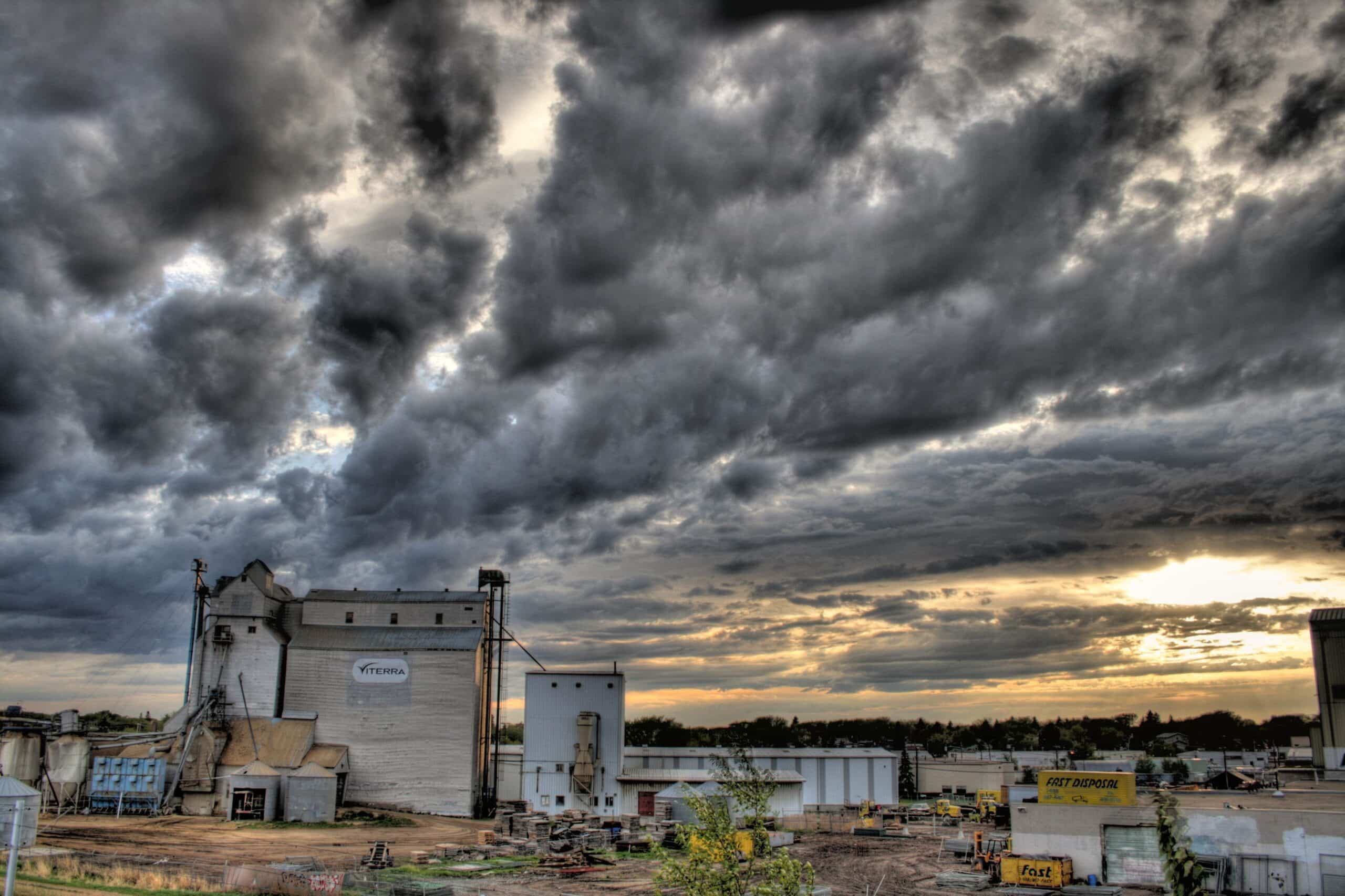
15 Aug Preparing Your Roof For Severe Weather
You know the saying, ‘The best offense is a good defense’? Well not only is it true for sports, it applies to maintaining and extending the life of your roofing system. The more you do to protect your roof, the longer it’ll last, saving you financial headaches in the end. Here in the Midwest, the weather has the tendency to be a little unpredictable. It’s not unheard of to have a severe snowstorm followed by a heavy rainstorm, just to open up to clear skies moments later. With this level of unpredictability, often the best thing you can do is stay alert and be prepared in order to protect your assets. This sounds impossible, and truthfully no matter what you do, you won’t always be prepared everything. But by following these tips, you will be in better shape for maintaining your roof and protecting it from the weather. There are also a few things you can do right before a severe weather event if you’re lucky enough to know it’s coming. See just how damaging weather can be right here in Indiana.
Plan for the Worst
You can’t be too prepared. If you know severe weather is on its way, prepare for the worst. Weather can turn in an instant, so what might look like moderate winds and heavy rain can change quickly to a severe weather event. You won’t regret taking precautions if the storm proves to be non-damaging, but you’ll be kicking yourself if you fail to prepare as much as possible and you’re left with thousands of dollars in damage.
Make A Maintenance Plan
Most storms aren’t going to produce damage all on their own. In a lot of cases, we see damage due to age and neglect. If your drains are clogged, or you have cracks or spaces in your flashing, you’re much more likely to see water damage after a storm or the roofing system is left in a more vulnerable state for when the next storm arrives. A maintained roof can resist water intrusion better and loose flashings and field seams are less vulnerable to wind uplift. Another tip: don’t be casual with your roof maintenance plan. Roofing systems are an important building asset and need to be taken care of properly. Installing and forgetting about your roof will lead to future trouble.
Perimeter and Equipment Flashing
Flashings protect areas where the roof membrane meets angle changes and penetrations in the roof assembly. These details can fail sooner than other roofing details and can be more vulnerable to water intrusion. Be sure to check the flashing regularly and fix any issues as soon as you see them. Maintaining these details isn’t enough. Be sure they are installed properly from day one. Fully vet anyone you let up on your roof and check the job was done right the first time. If you’re unsure if the job is done right, bring in an independent roof consultant to inspect the work.
Gutters, Downspouts, and Drains
As we talked about in the maintenance section of this blog, drains can be your friend or your worst enemy. This goes for all types of roofs. Invest in quality gutters, downspouts and drains to make sure water isn’t sitting around your roof causing damage. Clear away debris and any material that could clog the path or water flowing off your roof. Before a storm hits, be sure to check these and ensure everything is working properly. For gutters especially, snow and ice accumulation taxes the structure, so check before and after each winter season to save yourself from replacing gutters and potential leaks.
Roof Mounted Equipment
Do you have items on your roof? Satellites, solar panels, AC unit? While for the most part these are attached well., one weather event could expose loose attachments, causing damage to your roof. Check to make sure these are firmly attached. If you know a severe event is headed your way and an item can be removed easily, it might be a good option to do so. Damage from severe weather doesn’t just ruin mounted equipment, it can damage the roof itself if conditions are strong enough.
Routine Inspection
On the topic of inspection, it should be a part of your roof maintenance plan. Regularly schedule third-party inspections to ensure the roof is in good working condition. If you feel there has been damage after a weather event, you should contact an inspector you trust to come to give their opinion. Regularly scheduled inspections to avoid catastrophic damage from the unpredictable weather.
Looking for a team to add to your maintenance plan? We’re happy to help give you advice and guidance on what’s best for your roof. We’re not contractors, and we have nothing to sell you, we’re just here to give you a third-party opinion to get the most for your money and protect your investment from weather and anyone trying to take advantage of your situation. Contact our team and we’ll get started on assessing your roof the right way.


